This website uses cookies so that we can provide you with the best user experience possible. Cookie information is stored in your browser and performs functions such as recognising you when you return to our website and helping our team to understand which sections of the website you find most interesting and useful.
The 7 human-made Wonders of our World
The ancients created the original list of the Seven Wonders of the World. But they could hardly have imagined the wonders that humankind would come to create.
These human-made wonders of the world have long-held top spots as the best bucket list destinations. So, if you ever find yourself in one of these countries, check them out.
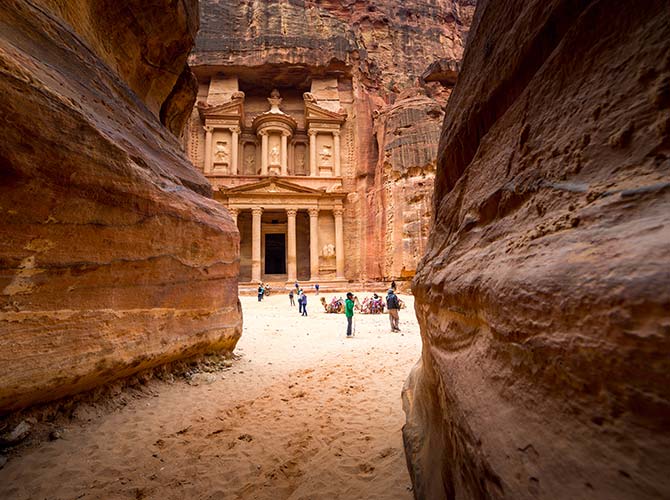
1. Petra, Jordan
Petra is a UNESCO World Heritage Site in the rugged terrain of southern Jordan. It is considered one of the greatest wonders of the ancient world. Carved into rose-red sandstone cliffs, Petra is a testament to human ingenuity, resilience, and cultural sophistication.
Once the thriving capital of the Nabataean Kingdom, Petra flourished from the 4th century BCE until 106 CE.
One of Petra’s most iconic features is Al-Khazneh, the Treasury. The elaborate facade, considered a royal tomb, is carved into the massive cliff face. Its intricate Corinthian columns friezes, and sculptures reflect a beautiful fusion of Nabataean, Hellenistic, and Roman architectural styles.
Click here to learn more about visiting the ancient City of Petra.
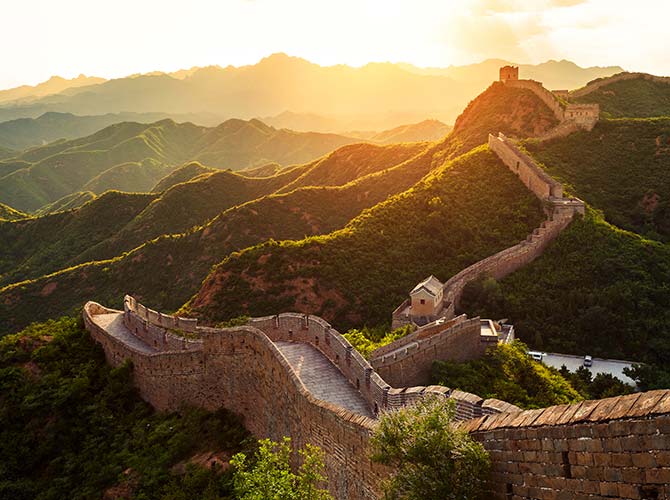
2. The Great Wall of China
Discover the Great Wall of China. One of the world’s most impressive feats of engineering, the wall is an iconic symbol of China and man’s ingenuity. Stretching over 5,500 miles, walking this monumental structure is an adventure of a lifetime. With the wall traversing nine provinces, from western China to the border with North Korea, it offers breathtaking views and rich history. While many visitors flock to the popular sections near Beijing, exploring lesser-known areas can provide a more unique experience.
Construction of the wall began in the 7th century BCE and lasted nearly 1,800 years.
Join this unforgettable tour that allows you to walk along the Great Wall. Dive into the incredible culture and fascinating attractions that make China a must-see destination. Don’t miss out on this extraordinary journey!
3. Colosseum, Italy
Built over 1,900 years ago, the Colosseum in Rome is one of the most visited landmarks in the world and the largest amphitheatre ever built. It measures 620 by 513 feet (about the height of a 12-story building!) and has a staggering capacity of 50,000.
Designed to host many different spectacles, , The Colosseum was home to displays from theatre productions to exquisite displays of unfamiliar animals. Many people today, however, associate it with brutal gladiator fights. An estimated 500,000 people died there, with an estimated 10,000 animals killed in a single day! This impressive structure took around 8 years and over 50,000 enslaved people to build. Even though only about a third of the original building remains, it still ignites a rich sense of awe for anyone visiting the ‘Eternal City’.
Home to beautiful scenery, welcoming people and fantastic food, why not tour Italy?
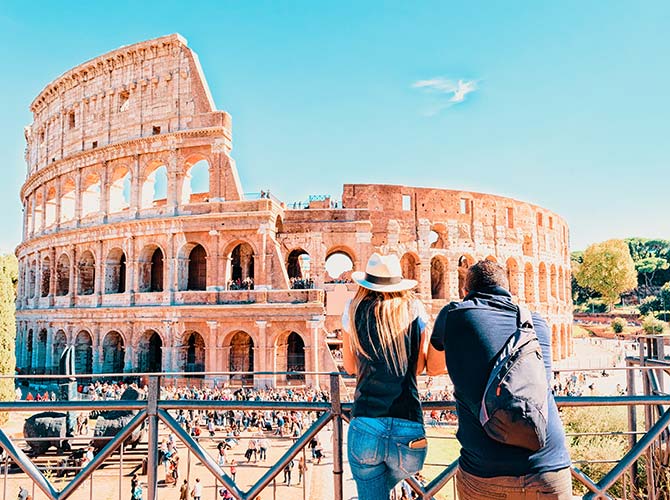
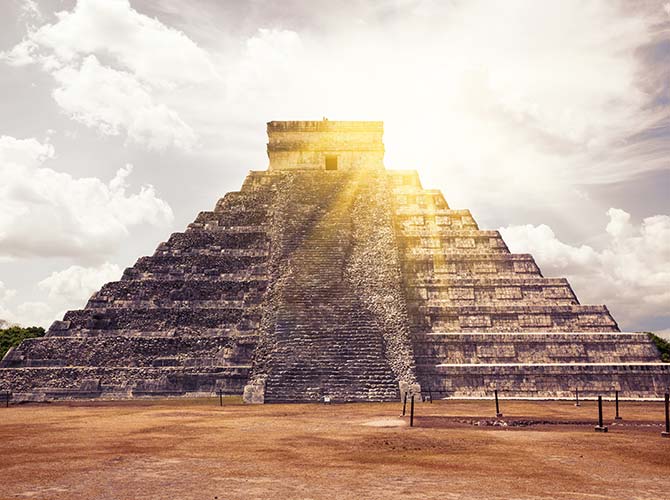
4. Chichen Itza, Mexico
The Mayans are among the most intriguing, advanced civilisations our world has seen. Chichen Itza is one of their best-preserved ruins. Situated on the Yacatán peninsula, this collection of ‘time temples’ shows the Mayans’ extraordinary astronomical understanding.
Many temples were built to record astronomical events and the sun’s position. For example, the Chichen Itza temple aligns with the sun’s position during the summer and winter equinoxes. It also marks the northern point of Venus. So well built were the structures that when the sun hits the right point in the sky, a shadow is cast across the stairs of the pyramid ‘El Castillo’, giving the shape of a snake slithering towards the temple at the top.
Could you align your holiday dates with a trip to Mexico?
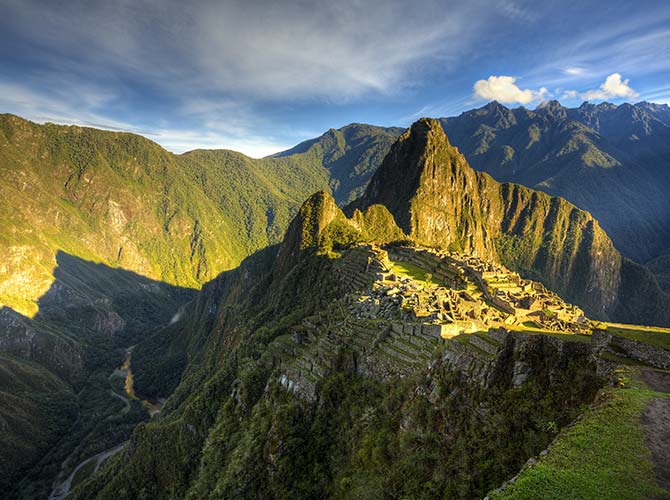
5. Machu Picchu, Peru
Machu Picchu has long taken a high spot on many bucket lists, and for good reason! This high-altitude hike explores the ‘Lost City of the Incas’, one of the few remaining settlements. The settlement was built around the 15th century as a royal retreat for the Incan Empire. The engineering of the site still baffles archaeologists today. The incredible Incan Empire managed to create their buildings using no mortar. Sandwiched together so tightly, the stones bounce and fall back into place. Genius!
To reach Machu Picchu, many people take on the famous Inca Trail. Once you get to the site, you can see the remains of the sacred sun-dial, the circular tower, the central plaza and the royal quarters.
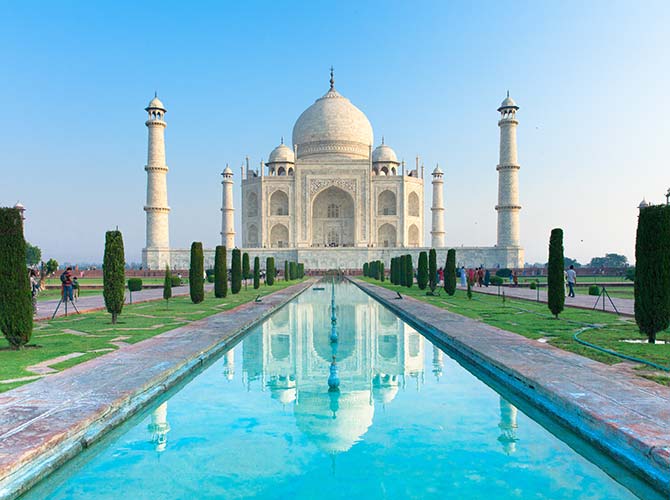
6. Taj Mahal, India
The Taj Mahal in Agra is one of the most beautiful structures in the world and an iconic symbol of India. Completed in 1653 after 22 years of construction, it involved the efforts of over 20,000 workers and around 1,000 elephants. Emperor Shah Jahan commissioned this magnificent building to honor his beloved wife, who sadly passed away after giving birth to their fourteenth child. The Taj Mahal is the finest example of Mughal architecture on Earth. Constructed from ivory-white marble with embedded semi-precious stones, the four sides of the mausoleum exhibit near-perfect symmetry, which is beautifully reflected in the long pond leading to its entrance. To witness the Taj Mahal in all its glory, visit at sunrise or sunset, and enjoy the serene gardens as the sun illuminates the stunning ivory-white structure.
Follow your heart to India and the Taj Mahal.
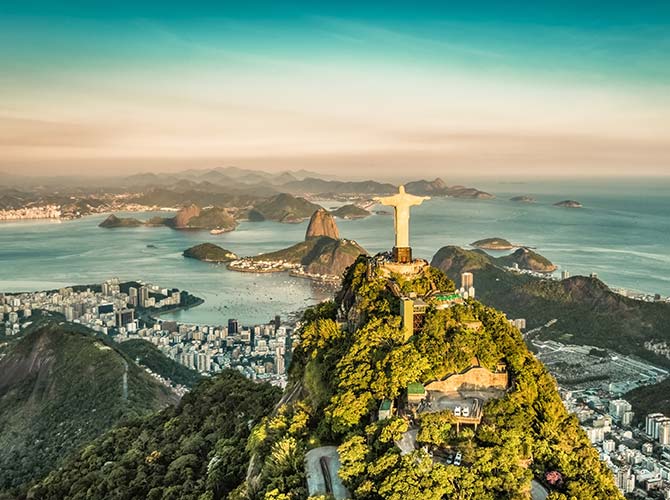
7. Christ the Redeemer, Brazil
Now a national symbol of Brazil, the Christ the Redeemer statue is an astonishing 2,300 feet tall—the largest Art Deco sculpture in the world. Lightning strikes it about five times a year; it is so tall! Perched high on Mount Corcovado in Rio de Janeiro, the view upon reaching Christ the Redeemer is simply out of this world.
Amazingly, the entire building of the statue was funded by donations from Brazilian Catholics after World War One, when the people of Brazil became concerned about crime and sin in the area. The statue is so large that it took nearly 6 million tiles to cover it, which were applied by devout women, many of whom wrote messages, names and prayers on the back of each tile. It took 5 years to build and was completed by 1926, making it the most recent of the 7 Human-Made Wonders of the World.
Don’t miss the chance to witness this awe-inspiring landmark and immerse yourself in the vibrant culture of Brazil!
Whether you visit the natural or human-made wonders, we hope 2025 is a wonder-full year!
We are passionate adventure travelers who want to share the world and our travel experiences with everyone…
